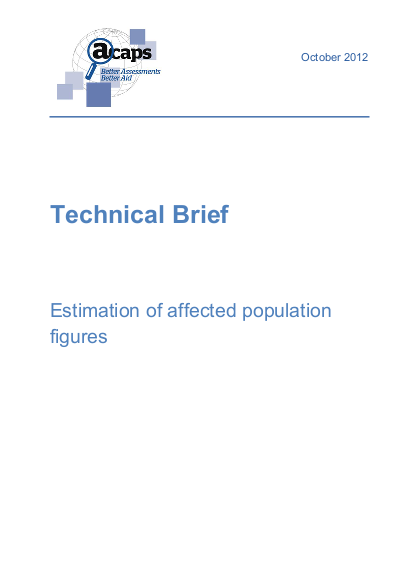
Most crises disrupt communities and many displace people. The size and demographic characteristics of the affected population may change because of displacement, migration or destruction of infrastructure. Timely, accurate and reliable information on the numbers and locations of people affected by a crisis is crucial for an effective and efficient humanitarian response (WFP 2007). Therefore, the quantitative expression of the size and characteristics of the population affected by a crisis is a central part of the assessment process (ECLAC 2006). Quantitative information is only part of the picture and should be complemented by qualitative information providing details on how and why people are affected as well as the severity of the situation for the affected population. However, without a reasonably accurate estimate of numbers, the scale of the emergency will remain imprecise and the delivery of assistance to beneficiaries, particularly in the early stages of an emergency, is likely to be impaired. Global numbers and an ethnic, gender and age breakdown are clearly important for a range of humanitarian assistance activities including programme planning, protection, fund-raising, and advocacy. Without statistics and demographics, effective assistance and protection would ultimately become impossible. Furthermore, the affected population has the right to be counted as accurately as possible, since this is a pre-condition for assistance or protection (RNN 1997).